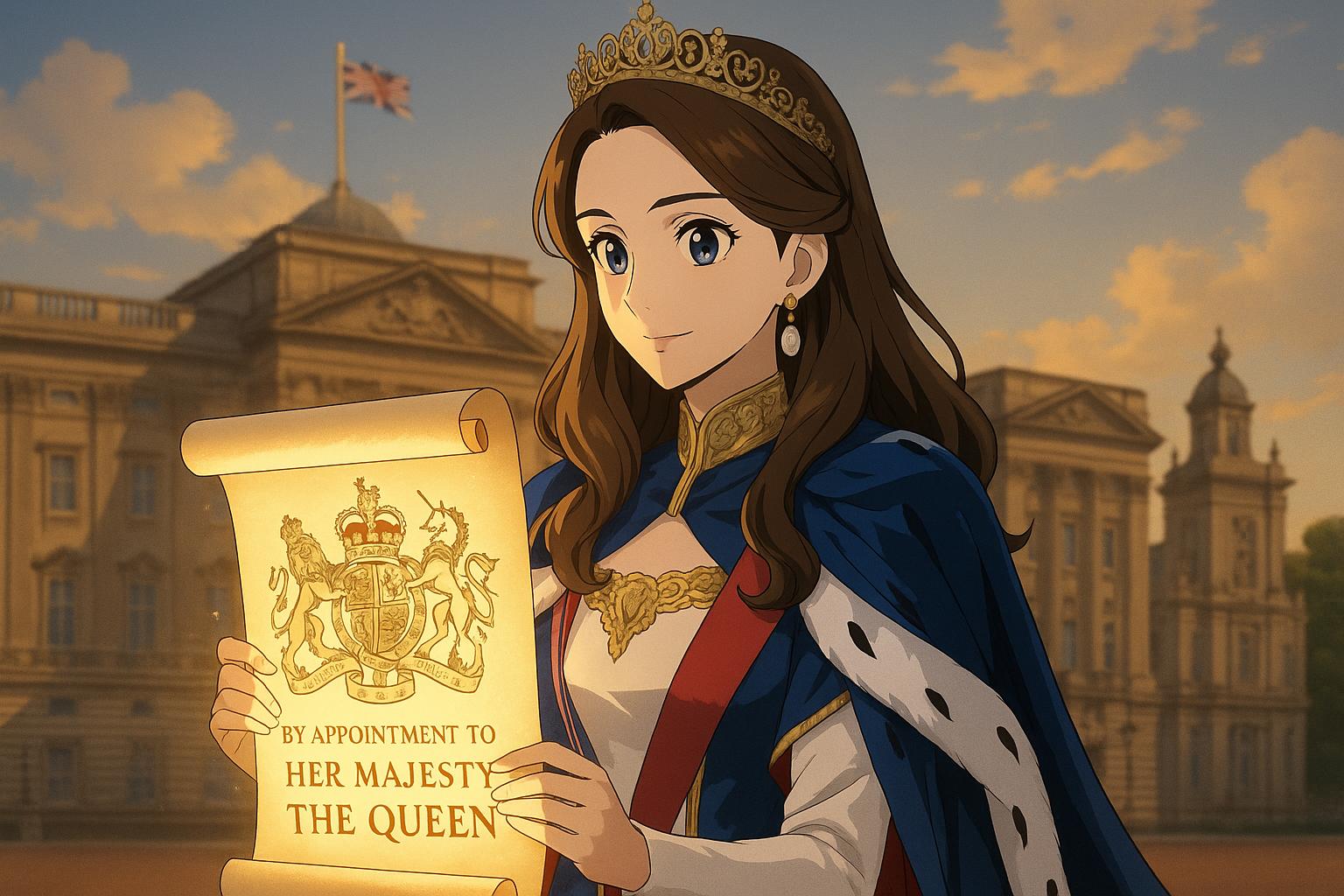A royal warrant serves as an official endorsement from the British monarchy, providing a prestigious seal of approval that can significantly elevate a company's profile and marketability. The endorsement is not just symbolic; it can stimulate growth and enhance brand reputation, transforming the fortunes of those granted such recognition. Recently, nearly 400 companies were awarded royal warrants in December, marking a significant moment as Kate Middleton, now the Princess of Wales, steps further into her role as a key player in the monarchy’s modern image.
Historically, royal warrants have been an exclusive privilege, last granted by the Princess of Wales to companies in the era of Mary of Teck, prior to her husband, King George V, ascending to the throne in 1910. The recent announcements indicate that Kate, as she resumes public duties following a bout of illness, is poised to break this long-standing tradition. However, her ability to issue royal warrants is currently contingent upon King Charles's approval, which has been notably delayed. Sources suggest that this delay could stem from a backlog of applications resulting from the late Queen’s extensive list of warrants and the busy schedule surrounding both her funeral and Charles's coronation.
The royal warrants system is designed to endorse excellence, awarding privileges primarily to those who have routinely supplied goods or services to the royal household. These warrants not only bestow the right to display the royal coat of arms on packaging for a period of up to five years, but they also carry the implicit promise of continual quality and service—a trust that brands must uphold to avoid cancellation. While companies are eager to be recognised, especially those supplying to Kate and her household, applications will remain on hold until King Charles grants the necessary permissions.
Kate and her husband, Prince William, have expressed intentions to use royal warrants not only to acknowledge British craftsmanship but also to promote a sustainable and environmentally aware industry. In the past, Prince William has endorsed several eco-friendly brands, such as Rapanui, which focuses on sustainable clothing, and Purified Shoes, which makes plastic-free trainers. This focus aligns with a broader royal enrichment strategy aimed at recognising and uplifting British-based manufacturers and retailers, particularly as Britain continues to navigate post-Brexit economic landscapes.
The potential impact of issuing these royal warrants could be profound, particularly considering what has been termed the "Kate Effect"—a phenomenon where items worn by the Princess often sell out almost instantaneously upon her public appearance. Should she begin granting royal warrants, the ramifications for brands favoured by the Princess could lead to substantial financial boosts and heightened consumer interest.
Brands such as Alexander McQueen, Catherine Walker, and Strathberry are already in the spotlight as potential recipients of royal warrants. Alexander McQueen, in particular, has been a staple in Kate’s wardrobe, with designer Sarah Burton crafting some of her most iconic looks, including her wedding dress. Meanwhile, the Edinburgh-based luxury handbag brand Strathberry has gained popularity among royal family members, showcasing how effectively royal patronage can influence market trends.
In tandem with her fashion choices, Kate has also demonstrated a commitment to socially responsible fashion, favouring brands like Beulah London, which focuses on employing trafficked women. As the Princess of Wales prepares to engage in this historic venture, the anticipation surrounding when she and William will be granted the power to issue these warrants remains palpable.
As Buckingham Palace and the Royal Warrant Holders Association continue to deliberate on this matter, the outcome will not only reflect on Kate's evolving role as a senior royal but will likely usher in a fresh chapter for British brands craving royal endorsement in an increasingly competitive marketplace.
Reference Map
- Paragraph 1: (1), (2), (3)
- Paragraph 2: (2), (4)
- Paragraph 3: (2), (6), (7)
- Paragraph 4: (5), (6)
- Paragraph 5: (1), (4), (6)
- Paragraph 6: (1), (3), (4)
- Paragraph 7: (3), (6)
- Paragraph 8: (6), (7)
Source: Noah Wire Services
